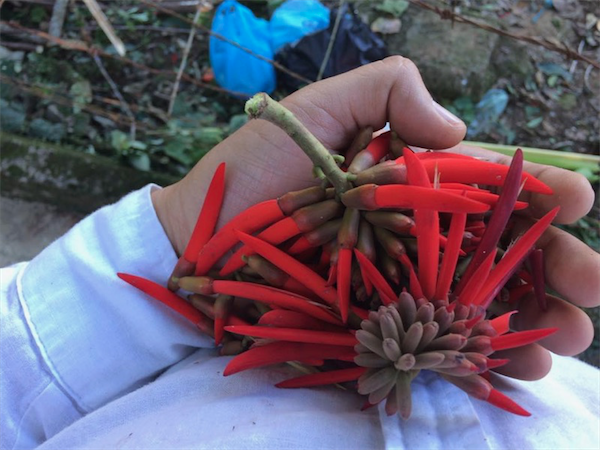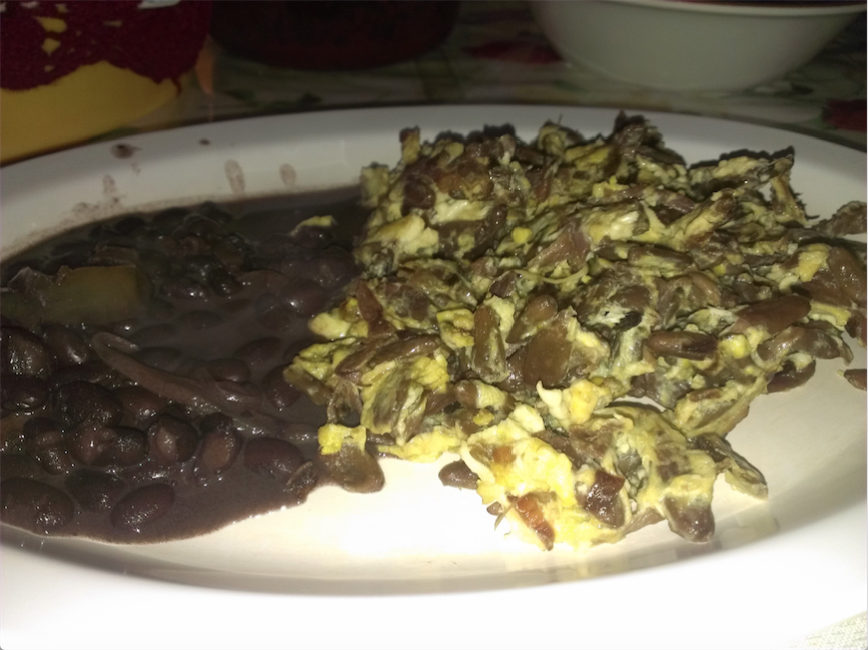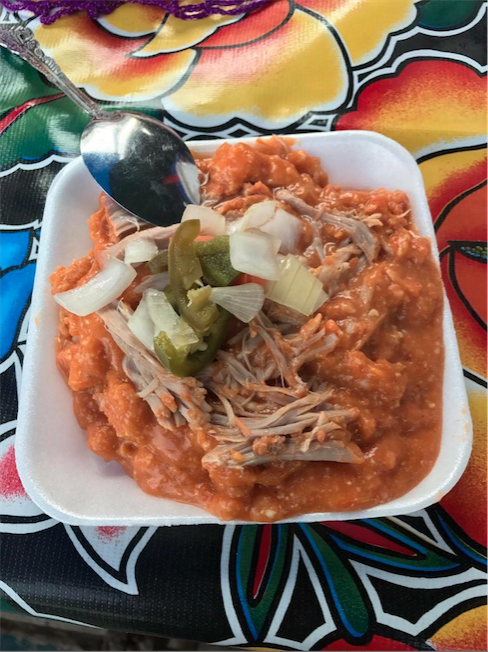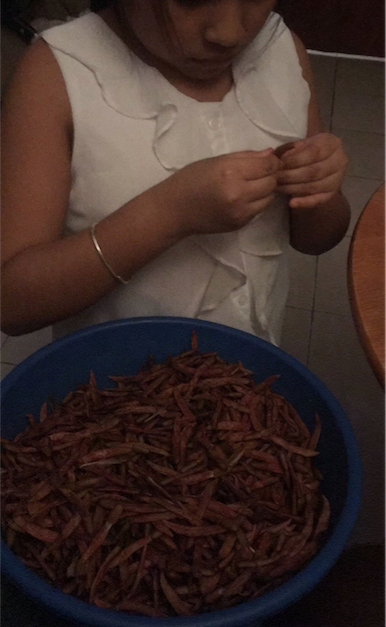By Reuben Torres
Alfonso moved to United States almost 15 years ago. Since then, he’s worked in restaurant after restaurant, serving the world’s cuisine to the hungry New Yorkers who can afford it.
He immigrated to the United States from La Huasteca, a region in Mexico near the state of Veracruz, known for its rich folkloric culture and large indigenous population. His wife, Primi, followed him a year later. Even though his job has found him immersed in some of the world’s finest kitchens, it’s his own native cuisine that he pines for the most.
“We miss it a lot,” said Alfonso. “We miss it so much that we just had food delivered from the region.”
One of the foods that Alfonso and Primi import from their native region is pichoco (or pemuche), a red flower native to Mexico that looks like a jalapeño. Its flavor is quite different, though, and is comparable to that of beef. It can be used in an assortment of dishes like tamales, tortas, and many others.
“We use it on eggs for breakfast,” said Primi, “you just boil the flower with salt, then you drain the water from the flower. You fry some onions on a pan and toss the flower in there. And finally you put it over some scrambled eggs.”
Another typical Huastecan dish that Primi prepares is the zacahuil. Normally it’s prepared with corn, but Primi mentions that the recipe changes when she makes it in New York. “I use maíz pozolero,” she said, “I boil the corn for an hour and then I grind it so that it looks like dough.”
One of the main ingredients in zacahuil (besides pork and chicken) is the chile huajillo, or huajillo pepper, which is typical of La Huasteca.
During the week, Alfonso works as a server at an American country-cooking food restaurant in Gramercy Park. When he’s not there he’s a server at a pizzeria on the Upper East Side. Because of the hectic nature of the industry, he’s had to switch jobs many times.
“I used to work at another restaurant, but it closed down,” he said. “Another one burned down.”
His two jobs have him working well past a 40-hour week, and leave him little time to spend time at home with his family. Breakfast is one of the few meals that Alfonso can enjoy at home. On a typical day he gets off work anywhere from 6 to 10 p.m., but sometimes he does not arrive home until midnight. Alfonso’s commute from his Corona home ranges between 45 minutes and an hour.
“When he works late, he misses dinner,” said Primi, “or if he gets out around six, he’ll still make it in time to eat whatever I made that day. Typically, I make a chicken or a pork stew.”
Primi and Alfonso met during their days as high school students and went on to study together at the University of Xalapa. Primi received a degree in industrial relations, which she says is roughly equivalent to human resources, for factory jobs. Alfonso, who was studying for a degree in meteorology, eventually abandoned his studies to pursue a life in the States.
“I didn’t really think about it,” said Primi. “He proposed and I went with him. I didn’t consider the risks or anything.”
The couple has been together ever since. They’ve lived in their home in Corona, Queens, for nearly 15 years, a neighborhood known for its large Mexican community. According to a 2013 report issued by the city of New York, titled “The Newest New Yorkers,” Corona is home to 66,300 foreign-born immigrants out of a total of 103,210 residents, making it one of the top five neighborhoods in New York for immigrants.
The couple has two daughters, Kaylee, 10, and Heyde, 12, both of them born in the U.S., but Alfonso and Primi are undocumented — and they worry that the current political climate might mean that they become separated from their children.
“We don’t know if we might have to leave their side one day,” said Alfonso, referring to his two daughters. “Since their mother and I don’t have our papers in order, we want to prepare them for the challenges they might face.” .
For Alfonso and Primi, music lessons are a way of to teach their children responsibility and structure. Both Kaylee and Heyde take choral and guitar lessons at St Peter’s, the family’s church in Midtown Manhattan.
On weekdays, Primi eats alone with her two daughters, who also have busy schedules.
“Sometimes one will come in at two and the other one at four,” she said.
Alfonso’s only day off is Sunday. It is also the only opportunity for the family to spend time together. They start the day off by going to church, at St. Peter’s in midtown Manhattan. Like Alfonso and Primi, a lot of the families that attend the church don’t have all of their legal paperwork in order. The church acts as a kind of sanctuary for migrants, offering everything from free immigration-related legal services to music lessons for children.
After church, the family heads back home. The mood is one of tranquility. Primi prepares a dish called pascal, which is also typical of La Huasteca. It is a chicken broth that also includes chile huajillo, as well as chile de arbol, sesame and pumpkin seeds (which are referred to as pepitas). She buys most of the ingredients at the neighborhood ethnic grocery, La Susana, in neighboring Jackson Heights.
The sesame, chile huajillo, and chile de arbol and pepitas are typically ground together in a molino (grinder), but because Primi doesn’t own one, she uses a blender. The broth cooks for about 20-30 minutes and the ingredients are added after, along with some lemon wedges.
After the meal, the two daughters practice guitar, and more informally, their choral work.
“They’re always singing around the house,” said Primi.
Alfonso takes pride in the accomplishments of her daughters. Last year, they performed at Carnegie Hall, as part of a choral group.
“They’ve performed at other places,” said Alfonso, mentioning performances like a Cinco de Mayo event at City Hall, and another for the Mexican consul. But for him, the Carnegie Hall performance was something else.
“It’s a higher level,” he said.
Tags: cinco de mayo, la huasteca, Mexico, picocho




Your Comments